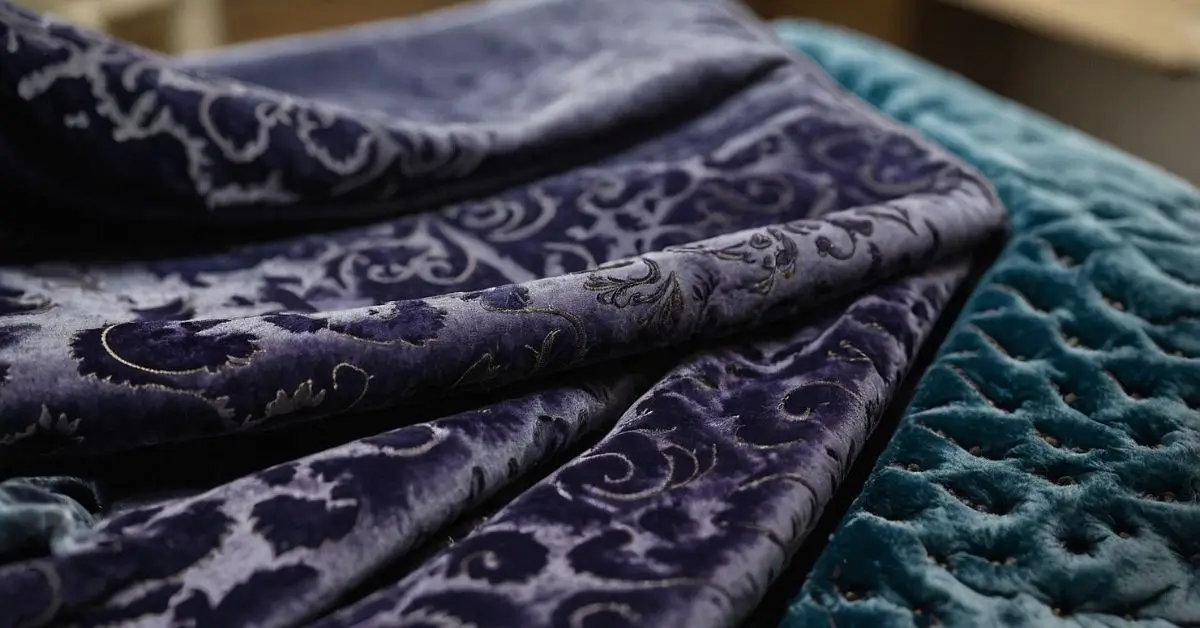Velvet is a luxurious fabric known for its soft texture, rich appearance, and elegant sheen. It has been associated with royalty, wealth, and high fashion throughout history. However, despite its beauty, velvet can be quite tricky to clean and maintain. Many people are hesitant to bring velvet into their homes or wardrobes because they fear it will be difficult to care for. However, with the right techniques and knowledge, cleaning velvet can be simple and efficient. In this article, we will discuss how to properly clean velvet, maintain its plush appearance, and address specific types of stains, ensuring your velvet fabrics stay looking their best.
Understanding Velvet: Types and Characteristics
Before diving into cleaning techniques, it is essential to understand the fabric you are working with. Velvet comes in several different types, each with unique properties and care requirements.
Types of Velvet:
- Silk Velvet: The most luxurious type of velvet, silk velvet is soft, delicate, and has a high sheen. It is often used in high-end fashion and home décor. Silk velvet is sensitive to moisture and requires careful cleaning.
- Cotton Velvet: Slightly less shiny than silk velvet, cotton velvet is more durable and easier to clean. It is commonly used in upholstery and clothing. Cotton velvet can handle more moisture and is less prone to damage.
- Synthetic Velvet: Made from polyester, nylon, or other synthetic fibers, synthetic velvet mimics the appearance of silk velvet but is much more affordable and durable. Synthetic velvet is often used in everyday clothing and furnishings. It can handle more aggressive cleaning methods than natural velvet fabrics.
- Crushed Velvet: This velvet has a textured look, achieved by twisting the fabric while it’s still wet, which creates a wrinkled appearance. Crushed velvet is less prone to showing stains and wear.
- Velveteen: Velveteen is a cotton-based velvet with a shorter pile and less sheen. It is easier to care for and is often used in clothing and decorative items.
Each type of velvet requires a slightly different approach when it comes to cleaning, so it’s essential to know what you’re working with before attempting any cleaning methods.
Why Cleaning Velvet Requires Special Care
Velvet is made from a weave of fibers that stand upright, giving it a soft, plush texture known as the “pile.” This pile can be delicate and prone to damage, especially when exposed to water, heat, or harsh chemicals. The pile can also trap dust, dirt, and debris, which can dull the fabric’s appearance over time. Improper cleaning methods can cause the fibers to become flattened, discolored, or matted.
Because of these unique characteristics, velvet cleaning requires a more careful approach than other fabrics. By understanding how to clean velvet correctly, you can prevent damage and maintain its luxurious appearance.
How to Clean Velvet: Step-by-Step Guide
1. General Care and Maintenance
Proper maintenance is the key to keeping velvet in good condition. Regular care helps prevent dirt buildup and ensures that the fabric stays soft and vibrant. Here are some general care tips for velvet:
- Vacuuming: Use a vacuum with a soft brush attachment to gently remove dust and debris from the surface of the velvet. Make sure to vacuum in the direction of the pile to avoid damaging the fibers.
- Brushing: Use a soft, lint-free cloth or a soft-bristled brush to brush the fabric and remove any lint, hair, or dust that has accumulated on the surface. Always brush in the direction of the pile to prevent flattening.
- Spot Cleaning: For small spills, it’s crucial to act quickly. Gently blot the area with a clean, dry cloth to absorb as much of the liquid as possible. Avoid rubbing, as this can push the stain deeper into the fibers.
2. Removing Stains from Velvet
Stains on velvet can be intimidating, but most can be successfully treated if addressed promptly and correctly. Here’s a step-by-step guide for removing different types of stains from velvet:
- Water-Based Stains: For stains like juice, wine, or coffee, blot the area gently with a clean, damp cloth. Do not soak the fabric. Instead, blot the stain gently, working from the outside of the stain toward the center to prevent spreading. Once the stain is mostly lifted, use a dry cloth to blot any remaining moisture. Allow the fabric to air dry completely, and then brush the area to restore the pile.
- Oil-Based Stains: For greasy or oily stains, sprinkle baking soda or cornstarch on the affected area and let it sit for 15-20 minutes to absorb the oil. Then, gently brush off the powder with a soft brush. If the stain remains, mix a small amount of dish soap with water and lightly dab the area with a cloth. Avoid scrubbing. Blot with a dry cloth afterward and allow it to air dry.
- Ink Stains: For ink stains, rubbing alcohol can be an effective treatment. Dampen a cotton ball with rubbing alcohol and gently blot the stain. Be careful not to saturate the fabric. After blotting, use a dry cloth to absorb any excess alcohol and allow the fabric to air dry.
- Pet Hair and Fur: Velvet is prone to attracting pet hair and fur. Use a lint roller or a piece of tape to remove hair from the surface. A vacuum cleaner with a soft brush attachment can also help remove hair.
3. Deep Cleaning Velvet
Over time, velvet may require more thorough cleaning to restore its appearance. While some velvet items can be cleaned at home, others may require professional cleaning. Here’s how to deep clean velvet at home:
- Steam Cleaning: Steam is a velvet-friendly cleaning method that helps lift dirt and restore the fabric’s texture. You can use a handheld steamer to clean velvet furniture or clothing. Hold the steamer a few inches away from the fabric and move it slowly over the surface, allowing the steam to penetrate the fibers. After steaming, use a soft brush to restore the pile.
- Handwashing: For washable velvet garments, handwashing is a gentle option. Fill a basin with lukewarm water and add a small amount of mild detergent. Submerge the garment and gently agitate the water. Avoid wringing or twisting the fabric, as this can damage the fibers. Rinse thoroughly with clean water and lay the item flat on a clean towel to air dry. Do not hang velvet, as the weight of the water can cause stretching.
- Machine Washing: Some synthetic velvet fabrics are safe to machine wash. Use a gentle cycle with cold water and a mild detergent. Place the velvet item inside a mesh laundry bag to protect it during the wash. Once the wash cycle is complete, lay the item flat to dry, and avoid using a dryer, as heat can damage the fabric.
- Professional Cleaning: For delicate or expensive velvet items, such as silk velvet or antique velvet furniture, professional cleaning is recommended. A professional cleaner will have the tools and expertise to clean the fabric without causing damage.
4. Dealing with Creases and Flattened Pile
Velvet can sometimes develop creases or flattened areas, especially on upholstery or clothing that has been folded or sat on. Fortunately, there are a few methods to restore the pile and remove creases:
- Brushing: Gently brushing the fabric with a soft brush can help lift the pile and remove minor creases. Be sure to brush in the direction of the pile.
- Steaming: Using a handheld steamer, lightly steam the creased or flattened areas. This will help the fibers relax and return to their original position. Be careful not to oversaturate the fabric with steam.
- Ironing with Care: If steaming doesn’t work, you can try ironing the velvet with caution. Turn the fabric inside out and place a clean cloth between the iron and the velvet. Use the lowest heat setting on your iron and avoid applying direct pressure to the fabric.
How to Prevent Damage to Velvet
Preventing damage to velvet is often easier than repairing it. Here are some tips to keep your velvet in pristine condition:
- Avoid Direct Sunlight: Velvet can fade and weaken when exposed to prolonged sunlight. Keep velvet items out of direct sunlight to preserve their color and texture.
- Rotate Cushions and Upholstery: If you have velvet furniture, regularly rotate cushions to avoid uneven wear and flattening of the pile.
- Store Velvet Properly: When storing velvet clothing or textiles, avoid folding them. Instead, hang them on padded hangers or roll them to prevent creasing. If folding is necessary, place tissue paper between the folds to reduce pressure.
- Avoid Heavy Pressure: Be mindful of placing heavy objects on velvet fabrics, as this can crush the pile and create permanent indentations.
Conclusion
Velvet is a beautiful and luxurious fabric, but it requires special care to maintain its soft, plush appearance. By following the cleaning and maintenance tips outlined in this guide, you can keep your velvet fabrics looking fresh, vibrant, and damage-free. From general care to stain removal and deep cleaning, understanding the unique properties of velvet is essential for successful fabric care. Whether you’re dealing with velvet clothing, upholstery, or home décor, a little extra attention will ensure that this timeless fabric remains as stunning as the day you first brought it home.











